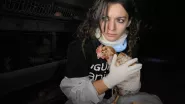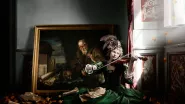In T
I put forth the idea that the female gaze is work made by women with a female viewer in mind. Images that explore the desires, experiences, and viewpoints of women outside of tightly structured gendered expectations, posing and male ego flattering. It is neither the opposite of the male gaze nor is it simply any work made by a woman. Women can and do, participate in the male gaze regularly. It is inevitable and unavoidable. The male gaze has always dominated how women were taught to view the world and themselves.
Part of engaging in the female gaze is deprogramming, digesting and deconstructing the language of our gendered values. Some artists have a knack for disregarding and/or challenging this indoctrination and create some engrossing work as a result. Work made to appease a drive and vision, not to placate the amorphous blob of outside opinion. It’s in the disregard for the banality of the expected that the private becomes political.
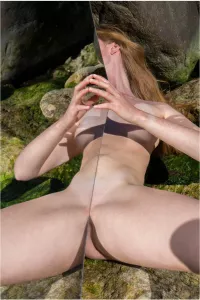
Denmark based artist
(
)’s series,
Feminine Development
, discusses the alienation of the female body and sexual identity from society. Ebbesen's work considers the ever-growing array of beauty products, medical procedures and possibilities of genetic manipulation driving societies "expectations of beauty and perfectness, both before and after birth". She manipulates the body using mirrors "to illustrate how we slowly move away from reality, merging with a surreal, parallel world where it is questionable what a natural body looks like."
© Henriette Sabroe Ebbesen
She also used the project to "confront [her] own body insecurities by creating images that would celebrate the female body for its capability of giving birth and creating a child starting from the division of just two cells." The images have a way of both exploring the female form while evading the casual objectification we are accustomed to. Though each image is of a nude form, it is in its relation to the reflection that it comes alive. Each image is like a private conversation. A projection of how we often have a warped view of who we are and what we look like. The series feels like a deprogramming of our learned ideas of womanhood, ideals, and sexuality. You have to break down the false narrative so you can see the pieces clearer. Ebbesen claims that "the creation of the images was sort of a reaction to feeling ashamed of [her] body and feeling sexual desires as a female. [She] wanted to celebrate the female body, it’s capabilities and [sexuality]”.
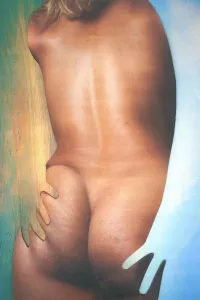
(
), born and raised in the United Kingdom, created the series
Postcards
from Pachamama by paper-collaging digital nudes into film images of Latin America. It is a "tongue in cheek look at sensuality, exoticization and humanity's dislocation from nature". Boon Cowler goes on to explain that she is "interested in the relationship between the physical versus the intellectual, specifically the common exclusion of one from the other within British culture, which leads to frustration and a need to escape. The desire those of us from cold countries hold for the Tropics, the fantasy of an island retreat; the exoticization of a foreign land where we can let go of our inhibitions, the shame felt due to an inherited history of colonization."

The images of landscape and figure are deconstructed and merged. Sometimes the figure cradles the landscape and other times the landscape embraces the figure which combines to create the illusion of a romantic embrace. The effect is an equation of our fetishism for female bodies with our lust for warm climates. Boon Cowler pokes fun at the fantasy of the scantily clad woman posing on foreign shores.
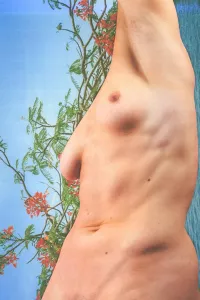
Neither the scenery or figures are fully visible nor whole, leaving them incomplete and unattainable. The images being depictions of how we think about the subjects, not how we experience them. Dissected into the palm trees, waves, buxom backsides, skin and water, Bonn Cowler's commentary is clear: playful, critical and cheeky. The resulting body of work is an effective deconstruction of our objectification of women, warped eroticism of "exotic" shores, and the ethnocentric privilege internalized by colonizing cultures.
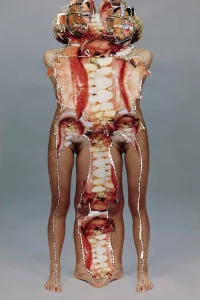
German-born artist
has been exploring the female body, age and maternal heredity in her projects
Body Openings and Generative
. Soltau's work is a violent and explorative process of destruction and reconstruction, resulting in a sort of female grotesque. Images are created by stitching together depictions of body parts and portraits with thread. In
Body Openings
she scrutinizes the aging body. "Like with a magnifying glass, we scrutinize our aging body. I consider this work also as an appeal concerning the fragility of the achievements of our generation."
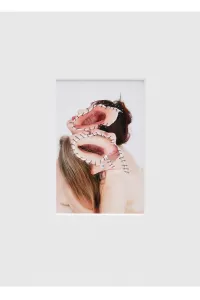
She sews the insides of the women on top of the outside of them, bringing the inside out. The main image of the whole form is obstructed by the oversized details, bringing to mind the overwhelming importance we give to small imperfections. The images are intense, personal and exciting. In contrast to our general social focus on patriarchal inheritance,
Generative
explores the connections between her and the other women within her family line. "The young girl already has the old body, and the old woman still has the young body inside her. The aim is to ensure that this painful process remains visible." She creates a vivid depiction of how we are shaped by those who raise us and those who raised them. How age is both cruel and yet abstract, being experienced by each person differently internally and externally. The back of Soltau's images are an equally important part of her work, showing just the stitches; the connections of thread binding the subjects together.
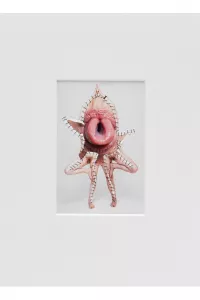
Each of these artists, in their unique ways, engages in the female gaze by deprogramming, digesting or deconstructing the language of our gendered values and female experience. They delve into unpopular topics, opinions, and ugly truths. They test the medium and are unapologetic in their studies. They are refreshing and invigorating in an often repetitive visual world.





